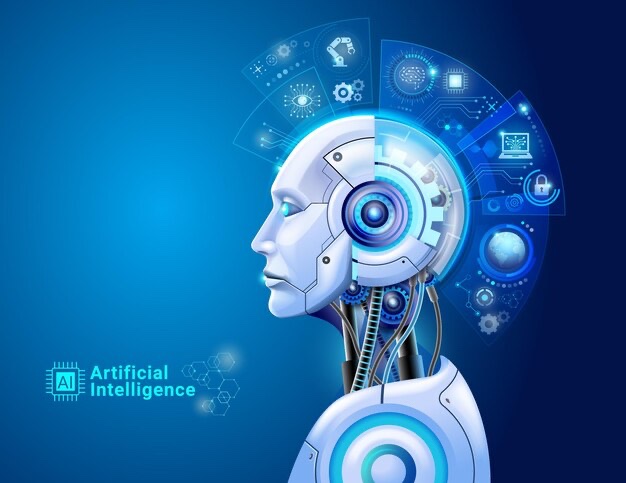The final frontier, space, has always captivated our imagination. It’s a realm of endless possibilities, where humanity’s thirst for exploration knows no bounds. To make these dreams a reality, a cutting-edge technologies have emerged as an essential tool in our cosmic toolkit: Artificial Intelligence (AI)
Before we embark on our journey into the cosmos of AI, let’s set the stage. The vastness of space beckons us, and it’s here that our modern tools are taking center stage. AI and other tools are pushing the boundaries of what’s possible in space exploration, making missions more efficient and opening up new avenues of discovery.
Significance Of Artificial Intelligence in Space Exploration
Artificial intelligence (AI) is playing an increasingly significant role in space exploration. AI can be used to develop autonomous spacecraft, analyze data, and plan missions in ways that were not possible before.
One of the most significant advantages of AI in space exploration is that it can help to reduce the cost and risk of missions. AI-powered spacecraft can navigate and perform tasks autonomously, without the need for human intervention. This can save money and reduce the risk of accidents.
AI can also help us to explore more of the universe. AI-powered robots and rovers can explore planets and moons that are too dangerous or difficult for humans to visit. For example, NASA’s Perseverance rover is using AI to explore the Jezero Crater on Mars, a region that is thought to have been a lake billions of years ago.
New discoveries are made with the help of AI . AI can be used to analyze large and complex datasets collected by space probes and rovers, helping scientists to identify patterns and trends that would be difficult or impossible to find manually. For example, AI is being used to analyze data from the James Webb Space Telescope, the most powerful telescope ever built.
Artificial Intelligence in Space Exploration
Autonomous Spacecraft
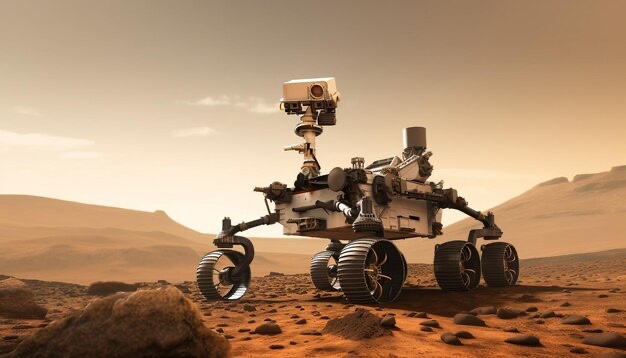
Concept of autonomous spacecraft
An autonomous spacecraft is a spacecraft that can navigate, maneuver, and perform tasks without human intervention. This is achieved by using artificial intelligence (AI) to control the spacecraft.
AI-powered spacecraft can use a variety of sensors to collect data about their surroundings. This data can then be used to make decisions about how to navigate, maneuver, and perform tasks. For example, an AI-powered spacecraft could use its sensors to detect and avoid obstacles, or to select the most efficient route to its destination.
Autonomous spacecraft are still under development, but they have the potential to revolutionize space exploration. By enabling spacecraft to operate without human intervention, autonomous spacecraft can help us to explore more of the universe and make new discoveries.
Examples of missions utilizing AI for autonomous navigation
These are some of the missions that have utilized AI for autonomous navigation:
- NASA’s OSIRIS-REx spacecraft used AI to autonomously navigate to and collect samples from the asteroid Bennu.
- NASA’s Perseverance rover is using AI to explore the Jezero Crater on Mars.
- NASA’s Europa Clipper spacecraft is scheduled to launch in 2024 and will use AI to explore Jupiter’s moon Europa.
Benefits and challenges of autonomous spacecraft
Benefits of autonomous spacecraft
There are many benefits to using autonomous spacecraft in space exploration. Here are a few of the most important ones:
- Reduced cost and risk of missions: Autonomous spacecraft can operate without human intervention, which can significantly reduce the cost and risk of missions. For example, autonomous spacecraft can be used to explore hazardous environments or to perform tasks that are too dangerous or repetitive for humans. NASA’s OSIRIS-REx spacecraft used AI to autonomously navigate to and collect samples from the asteroid Bennu. This was a challenging mission, as Bennu is a small and irregularly shaped asteroid. AI helped to ensure the mission’s success by allowing the spacecraft to navigate to and collect samples from Bennu autonomously.
- Ability to explore more of the universe: Autonomous spacecraft have the potential to revolutionize space exploration by making it possible to explore new and dangerous environments, and by collecting data for long periods of time without the need for human intervention. This is because autonomous spacecraft can travel to and explore places that are too far away or too dangerous for humans to reach, such as the outer reaches of the solar system or other galaxies. For example, NASA’s Perseverance rover is using artificial intelligence in space to explore the Jezero Crater on Mars. The Jezero Crater is a challenging environment, with rocks, sand dunes, and other obstacles. AI is helping the Perseverance rover to navigate the Jezero Crater safely and efficiently.
- Ability to make new discoveries: Autonomous spacecraft can collect data and make decisions without human intervention, which can lead to new discoveries. The James Webb Space Telescope (JWST) is a prime example of how autonomous spacecraft can be used to make new discoveries. The JWST is the most powerful telescope ever built, and it is designed to study the universe in infrared light. The JWST is using its infrared capabilities to make new discoveries about the universe. For example, the JWST has recently discovered the most distant galaxy ever seen, which is thought to have formed just 200 million years after the Big Bang.
Challenges of autonomous spacecraft
While autonomous spacecraft offer many benefits, there are also some challenges that need to be addressed. Here are a few of the most important ones:
- Developing reliable and safe AI systems: Autonomous spacecraft rely on AI systems to make decisions and control the spacecraft. It is important to develop reliable and safe AI systems that can operate in the harsh environment of space.
- Testing and validating AI systems in space: It is difficult to test and validate AI systems in space. This is because it is difficult to simulate all of the possible conditions that an autonomous spacecraft may encounter in space.
- Ensuring that AI systems are aligned with human values: It is important to ensure that AI systems are aligned with human values. This means that AI systems should be designed to act in the best interests of humans, even if this means making decisions that are not optimal for the spacecraft itself.
Despite the challenges, the potential benefits of autonomous spacecraft are enormous. AI has the potential to revolutionize space exploration in the coming years.
Data Analysis in Space Exploration
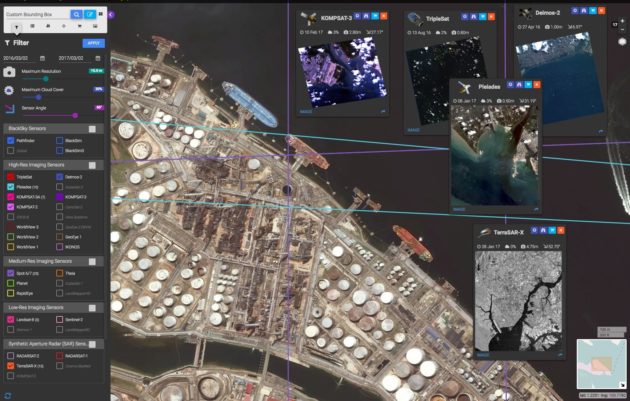
How AI is used for data analysis in space missions
Artificial intelligence (AI) is being used in a variety of ways to analyze data from space missions. AI algorithms can be used to:
- Identify patterns and trends in data: AI can be used to identify patterns and trends in data that would be difficult or impossible for humans to find manually. For example, AI is being used to analyze data from the James Webb Space Telescope to identify new exoplanets and to study the evolution of galaxies.
- Classify data: AI can be used to classify data into different categories. For example, AI is being used to classify images from the Perseverance rover to identify different types of rocks and minerals.
- Predict future events: AI can be used to predict future events based on historical data. For example, AI is being used to predict solar flares and other space weather events.
AI’s role in processing and interpreting large datasets
Space missions generate massive amounts of data. AI can be used to process and interpret this data more efficiently and effectively than traditional methods.
For example, AI is being used to process data from the James Webb Space Telescope. The James Webb Space Telescope produces over 50 gigabytes of data per day. AI is used to filter and process this data to identify the most important and interesting objects and phenomena.
Real-world applications and outcomes
AI is already being used to make new discoveries in space exploration. For example, AI has been used to:
- Identify new exoplanets
- Study the evolution of galaxies
- Classify images from the Perseverance rover
- Predict solar flares and other space weather events
AI is also being used to develop new tools and technologies for space exploration. For example, AI is being used to develop new algorithms for spacecraft navigation and to develop new software tools for data analysis.
Mission Planning with AI
The role of AI in mission planning and decision-making
Artificial intelligence (AI) is playing an increasingly important role in mission planning and decision-making for space exploration. AI can be used to:
- Identify and evaluate different mission options: AI can be used to generate and evaluate different mission options based on a variety of criteria, such as scientific objectives, cost, and risk. For example, AI is being used to plan the next Mars Sample Return mission, which is a complex mission that will involve multiple spacecraft and rovers.
- Optimize mission parameters:AI can be used to optimize mission parameters, such as trajectories, landing sites, and task scheduling. For example, AI is being used to optimize the trajectory of the Europa Clipper spacecraft, which will explore Jupiter’s moon Europa.
- Make real-time decisions: AI can be used to make real-time decisions in response to unexpected events. For example, AI is being developed to help spacecraft avoid asteroids and other hazards.
How AI optimizes mission parameters
AI can optimize mission parameters in a variety of ways. For example, AI can be used to:
- Design more efficient trajectories: AI is used to design more efficient trajectories for spacecraft by taking into account factors such as gravity, fuel consumption, and mission objectives. For example, AI is being used to design the trajectory of the James Webb Space Telescope, which will travel to a distant orbit around the Sun.
- Select the best landing sites:AI is used to select the best landing sites for spacecraft by taking into account factors such as terrain, weather, and scientific objectives. For example, AI is being used to select the landing site for the Perseverance rover on Mars.
- Schedule tasks more efficiently: AI is used to schedule tasks more efficiently for spacecraft by taking into account factors such as power constraints, time constraints, and task dependencies. For example, AI is being used to schedule tasks for the International Space Station.
Rocket Landing With AI
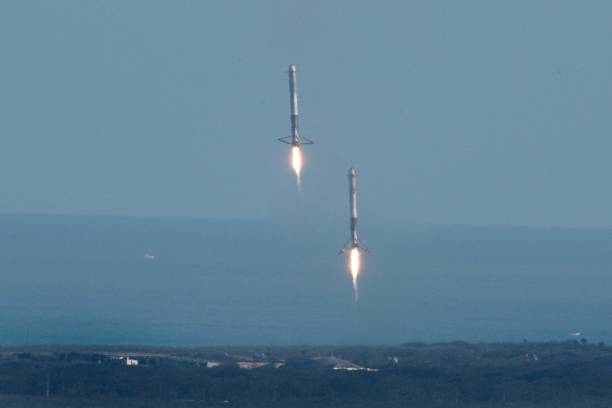
AI takes the controls
Traditional landings were like puppet shows, with humans pulling the strings from afar. Today, AI algorithms are the puppeteers, analyzing real-time data on wind speeds, fuel levels, and environmental conditions. These algorithms make split-second decisions, guiding the rocket to a perfect touchdown even in unpredictable environments like Mars, where communication delays with Earth create insurmountable challenges for human control.
AI is being used in several innovative ways for rocket landings, with two prominent examples:
Grid fins and landing legs: SpaceX utilizes AI to control the grid fins and landing legs of its Falcon 9 and Falcon Heavy rockets. The AI algorithms analyze real-time data on wind speeds, fuel levels, and atmospheric conditions to make adjustments, guiding the rocket to a precise touchdown on land or a drone ship at sea. This has contributed to SpaceX’s impressive 97% landing success rate for Falcon 9 boosters.
Descent guidance and engine throttling: Blue Origin’s New Shepard capsule relies on AI to guide its descent and throttle the engine, ensuring a controlled and comfortable landing for passengers. The AI algorithms continuously analyze altitude, velocity, and wind conditions to adjust the spacecraft’s trajectory and engine thrust, leading to a soft touchdown on the designated landing pad.
Benefits of AI-powered landings:
- Soaring success rates: AI boasts significantly higher success rates compared to traditional methods. SpaceX, for example, has achieved an impressive 97% landing success rate for its Falcon 9 rockets, largely thanks to AI’s guiding hand.
- Cost-cutting fuel burns: Fewer landing failures mean less wasted time and resources. AI-powered landings can lead to cheaper space missions, opening up possibilities for more frequent launches and expanding our reach in the cosmos.
- Safer exploration beyond Earth: Landing in remote and challenging environments becomes a real possibility with AI. This opens doors for safer exploration of planets, moons, and asteroids, paving the way for scientific research and potentially even future human missions.
But it’s not all sunshine and rockets:
- Black box blues: AI is smart, but its decision-making can be hidden in a complex web of algorithms. This lack of transparency can raise concerns about accountability and understanding why a landing might go wrong.
- Reliance on data streams: AI thrives on data, and if that data is incomplete or faulty, the results can be disastrous. Cyberattacks or technical glitches could potentially compromise landing calculations, creating dangerous situations.
- The human touch dilemma: While AI excels at crunching numbers, it lacks the human element of intuition and adaptability. Over-reliance on AI could diminish the role of human expertise and potentially stifle innovation in the field.
Case studies showcasing AI’s impact on mission success
Here are a few case studies showcasing AI’s impact on mission success:
- NASA’s OSIRIS-REx spacecraft used AI to autonomously navigate to and collect samples from the asteroid Bennu. This was a challenging mission, as Bennu is a small and irregularly shaped asteroid. AI helped to ensure the mission’s success by allowing the spacecraft to navigate to and collect samples from Bennu autonomously.
- NASA’s Perseverance rover is using AI to explore the Jezero Crater on Mars. The Jezero Crater is a challenging environment, with rocks, sand dunes, and other obstacles. AI is helping the Perseverance rover to navigate the Jezero Crater safely and efficiently.
- NASA is using AI to plan the next Mars Sample Return mission. The Mars Sample Return mission is a complex mission that will involve multiple spacecraft and rovers. AI is helping NASA to plan the mission and to identify and evaluate different mission options.
Synergy Between AI and 3D Printing in Space
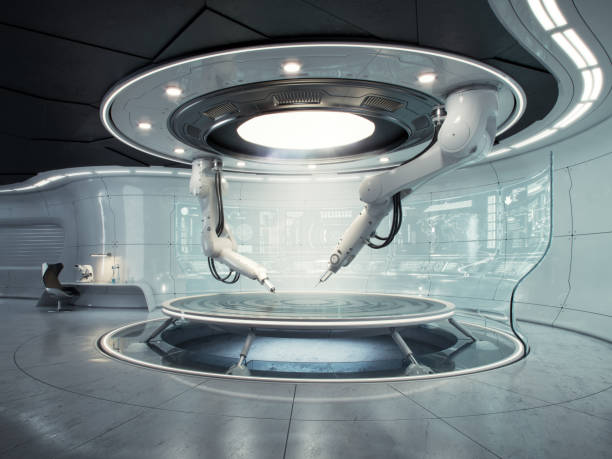
How AI complements 3D printing in space exploration
Artificial intelligence (AI) is already being used to complement 3D printing in space exploration in a number of ways. For example, AI is being used:
- To design and optimize 3D printed objects: AI is being used to design and optimize 3D printed objects for specific applications in space. For example, AI was used to design a 3D printed wrench that is strong and lightweight enough to be used by astronauts on the International Space Station (ISS).
- To control 3D printing processes: AI is being used to control 3D printing processes in real time, ensuring that 3D printed objects are produced with high quality and precision. For example, AI is being used to control the 3D printing of replacement parts for the ISS.
- To inspect and test 3D printed objects: AI is being used to inspect and test 3D printed objects for defects. For example, AI is being used to inspect 3D printed rocket parts to ensure that they are safe to use.
In addition to these specific examples, AI is also being used to develop new and innovative ways to use 3D printing in space exploration. For example, NASA is developing AI algorithms to help astronauts design and print 3D objects on demand, which could help to reduce the need to transport spare parts and tools from Earth.
Summary of the key points on AI’s role in space exploration and 3D printing in space
Artificial intelligence (AI) and 3D printing are two of the most transformative technologies of our time, and they have the potential to revolutionize space exploration.
AI can be used to complement 3D printing in a variety of ways, including designing and optimizing 3D printed objects, controlling 3D printing processes, and inspecting and testing 3D printed objects.
It is also being used to develop new and innovative ways to use 3D printing in space exploration, such as helping astronauts to design and print 3D objects on demand.
Emphasis on the transformative potential of these technologies in shaping the future of space exploration
AI and 3D printing have the potential to transform the future of space exploration in a number of ways. For example, these technologies could be used to:
- Reduce the cost and risk of space missions
- Enable new forms of space exploration, such as in-situ manufacturing and construction
- Revolutionize the way that we live and work in space.
Artificial intelligence and 3D printing have the potential to revolutionize space exploration, and it is exciting to see how these technologies are already being used in a variety of ways. If you are interested in learning more about AI and 3D printing in space, or if you have ideas about how these technologies could be used to further our exploration of the universe, please share your thoughts in the comments below!
